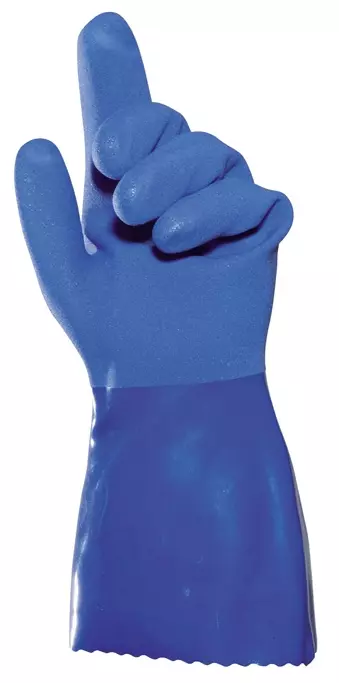
Features You'll Love

Cuff Style · Open
Determines how the glove secures around the wrist, affecting fit, protection from debris, and ease of putting gloves on and taking them off.
MAPA
TELSOL 351 PVC Serrated Granulated Gloves 30cm Blue, 72 pairs
5 / 5
357,08 €
Price per 6 packages (72 pairs)
4,96 € / pair
Choose size
Free delivery
Features You'll Love

Cuff Style · Open
Determines how the glove secures around the wrist, affecting fit, protection from debris, and ease of putting gloves on and taking them off.
Product description
Chemical protection glove made of seamless cotton knit with complete PVC coating. High resistance to oils, fats and hydrocarbons. Grained palm for secure gripping of wet or slippery objects. Good abrasion resistance and high resistance to UV rays, light and ozone guarantee a long service life. The protective glove is particularly recommended for people with an allergy to natural latex proteins. Tested chemicals: KLMNPT.